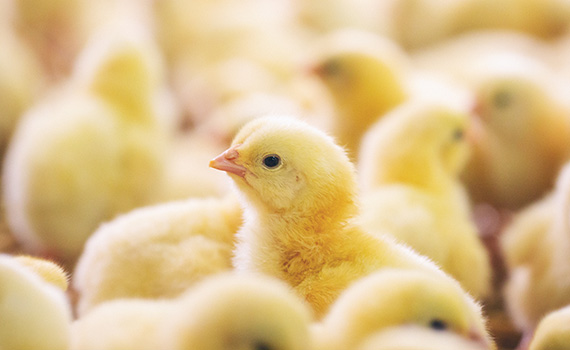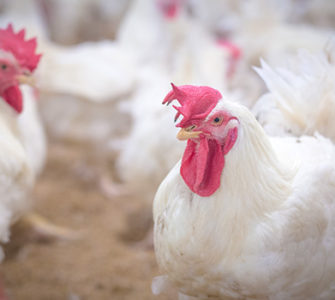Understanding lasalocid: Veterinarian offers tips for getting the most from this proven anticoccidial
By Jon Schaeffer, DVM, PhD
Director, US Poultry Veterinary Services
Zoetis
Developing a long-term strategy for managing coccidiosis in broilers is more critical today than ever before — not just to preserve the efficacy of our remaining medications, but also to keep control programs cost-effective and sustainable.
For most producers, that means using a combination of proven products — ionophores, synthetic anticoccidials and vaccines — at different times or in various combinations as part of carefully managed rotation and shuttle programs. This is easier said than done, however, especially now with the dwindling number of products available.
Between the absence of new anticoccidials in development and the inconsistent performance of coccidiosis vaccines — particularly in the winter months when coccidosis pressure is heavier — producers have had to become even more selective about which anticoccidials they use and when. They’ve also had to rethink traditional approaches and consider other options for managing this costly, parasitic disease.
Early impressions
For a rapidly growing number of US poultry companies, one “new” option has been the ionophore lasalocid (Avatec®). The powerful anticoccidial was first introduced 40 years ago, but until recently it had seen fairly little action in the broiler industry. While adding this fresh, underused and highly efficacious ionophore to their rotation programs was a no-brainer for many poultry companies, some veteran producers — particularly those who have been in the industry for more than 30 years —have been slow to embrace lasalocid following their early experience with the product.
Why their reluctance? Back in 1976, when lasalocid was introduced in the US, some broiler producers reported performance problems in flocks receiving the medication at the maximum dose rate of 125 ppm of feed. (More on that in a moment.) This was a puzzling development for the product’s developers. After all, lasalocid — like any feed medication — had been subjected to rigorous studies at various dose rates to obtain government approvals.
Why were some flocks suddenly having difficulty with the maximum dose rate? This question dogged poultry researchers for decades. In the meantime, many efficiency-minded broiler companies simply opted to use other anticoccidials.
New chapter
In 2011, when Zoetis acquired a product line that included lasalocid, my research colleagues and I recognized the world poultry industry needed more anticoccidials in its arsenal — and it needed them quickly. We therefore set out to solve the mysteries of lasalocid and why this anticoccidial disappointed some poultry producers in its early years.
It turns out that sodium, a common feed ingredient, was probably a significant contributor to the problem. Back in the late 1970s, poultry diets were routinely formulated with higher sodium levels — often 0.24% and higher — to increase water consumption while using monensin, the most commonly used anticoccidial at the time. This higher level of sodium was not compatible with the higher dose of lasalocid, however.
On some farms where sodium was not returned to more normal levels and lasalocid was used at the maximum dose rate of 125 ppm of feed, producers reported wet litter and, in some cases, “knock down” — a type of bird paralysis. Adding lasalocid was the only change they had made to their program, so naturally, it was easy to point to the medication as the cause of the problem. Upon further investigation, however, we now realize that evidence was largely circumstantial.
Electrolyte balance
Over the past 5 years, our research with lasalocid has helped us develop an even better understanding of this ionophore and how to use it effectively in today’s broiler operations. For example, when feeding lasalocid to broilers at high dose levels, we now recommend maintaining the dietary electrolyte balance (Na+K-Cl, milliequivalents (mEq) per kilogram) in the range of 172-240 mEq/Kg. Electrolyte levels are not critical when feeding lasalocid at the dose rate of 75 or 90 ppm.
We also have better insights into dose levels. In general, when fed at higher dose rates, all ionophores tend to restrict feed intake, especially late in production. This is why the dosage of lasalocid should be based on the degree of coccidial challenge, with a preference toward lower levels in the finisher phase whenever possible. Feeding at the rate of 125 ppm should be reserved for birds facing a severe coccidial challenge.
For most other flocks, numerous floor-pen studies and field trials have shown that, in most instances, feeding lasalocid at the rate of 75 to 90 ppm is effective for managing coccidiosis1 — especially in complexes where lasalocid has not been used recently. Gait scores with lower levels of lasalocid are similar to those in broilers fed other in-feed anticoccidials.2
Higher MRLs in Japan, Europe
While many broiler producers in the US, Canada and Latin America were intrigued by our findings and expressed interest in using lasalocid in their rotation programs, they still had one concern: exports.
Lasalocid is rapidly depleted from from chicken tissues following withdrawal from the feed. Nevertheless, one major export market — Japan — still had artificially low and nearly impossible-to-meet maximum residue limits (MRLs) for lasalocid. I say “artificially low” because previous sponsors of the product had not submitted residue-depletion data to Japan. As a result, Japan defaulted to arbitrary minimums that made lasalocid impractical to use in poultry raised for consumption in that country.
Our regulatory team therefore went to work to address this issue and make MRLs for lasalocid comparable to other ionophores. In December 2015, Japan adjusted its MRLs for lasalocid to a more manageable 1,000 ug/Kg for skin and fat and 100 ug/Kg for muscle. Europe has also adjusted its lasalocid MRL to 300 ug/Kg for skin and fat and 60 ug/Kg for muscle. Both levels are easily attainable for most producers.
Versatility
With lasalocid’s early performance mysteries solved and the MRL barriers lifted, the ionophore has since become a staple in the coccidiosis-management programs of many poultry operations throughout the US, where the product is seeing record sales, as well as in other major poultry markets. In the process, the broiler industry is also learning more about the best ways to use this versatile ionophore.
For example, some producers are using lasalocid in their winter finisher diets while others are incorporating it into summer programs. Lasalocid doesn’t seem to have the seasonal limitations that we see with some other anticoccidials, such as monensin or nicarbazin, which generally aren’t used in warm weather.
Lasalocid is also being used in so-called “bio-shuttle” programs to complement vaccination. In a published study that Zoetis conducted jointly with Southern Poultry Research Inc., Athens, Ga., broilers that had been vaccinated in ovo against coccidiosis and then fed lasalocid at 75 ppm of feed from day 18 to days 35, 50 or 60 showed a better feed-conversion ratio (FCR) than vaccinated but unmedicated controls while maintaining immunity against coccidial challenge.3
In fact, FCR was consistently improved by at least 3 points (0.03) compared to vaccination alone when lasalocid was started at 18 days of age and continued to 35 or 50 days of age. For birds grown to 60 days, the improvement in feed conversion was an impressive 5 to 6 points.
In a complex growing 1 million, 9-pound (4-kg) broilers per week processed at 60 days of age, a 5-point (0.05) reduction in FCR could translate into a $2 million annual return (depending on feed prices) as a result of adding lasalocid to the grower and finisher feed of broilers vaccinated against coccidiosis.
Minimizing resistance
One of the cardinal rules of coccidiosis management is to rotate among different types of anticoccidials — specifically, ionophores, synthetic anticoccidials (chemicals) and vaccines. Taking that a step further, producers also need to consider which ionophores are used in succession. For example, if your flocks have been on monensin, a monovalent ionophore, it’s generally preferable to switch to an ionophore in another class.
Lasalocid is in another class — it’s a divalent ionophore. The major benefit of this ionophore, however, is that lasalocid hasn’t been overused compared to monovalent ionophores or synthetic anticoccidials, so it’s less likely to result in coccidial resistance. Of course, care should be taken not to overuse this anticoccidial to preserve its effectiveness.
Now that we know how to use lasalocid more effectively, producers can add some much-needed diversity to their anticoccidial-rotation plan and in turn minimize resistance and realize improved broiler health, welfare, performance and profits.
1. Data on file, Study Report No. 26-13-70AQO, Zoetis LLC.
2. Ibid.
3. Mathis G, et al. Effect of lasalocid or salinomycin administration on performance and immunity following coccidian vaccination of commercial broilers. J. Appl. Poult. Res. 2014;23:577-585.
Posted on January 2, 2017

















